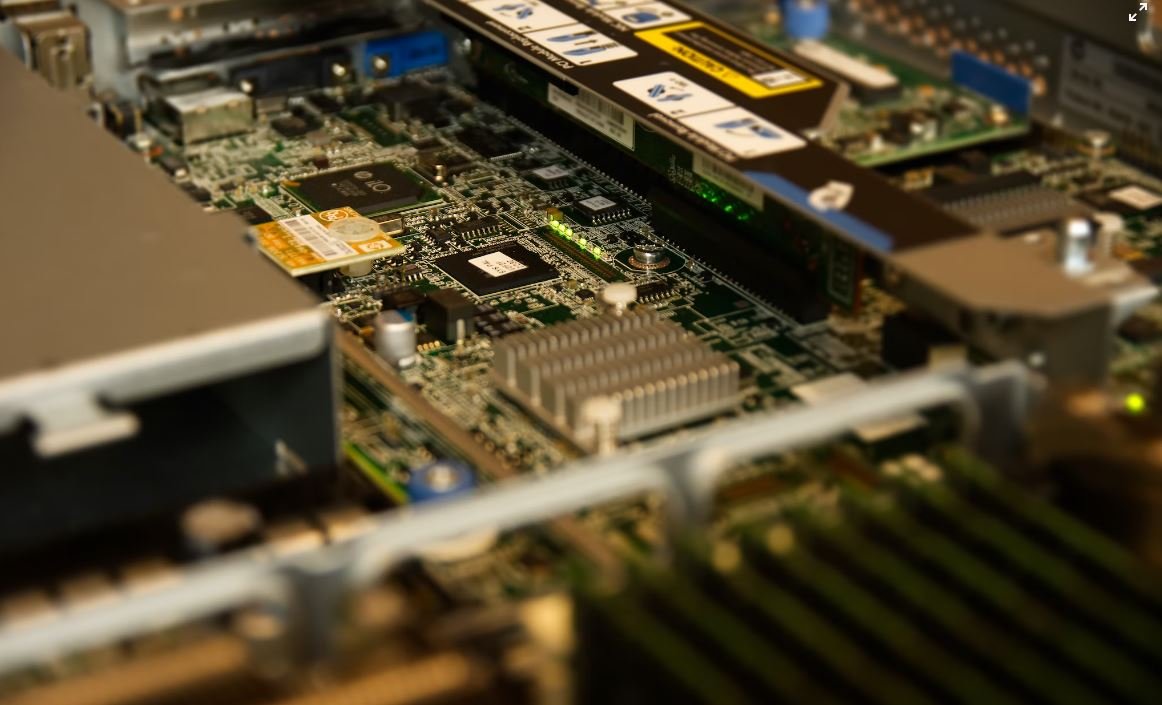Make Application Run in Background: Android
In the realm of Android development, having an application run smoothly in the background is a crucial aspect. This functionality allows users to perform other tasks on their devices while still keeping the app active. In this article, we will explore various methods and techniques to ensure your Android application can continue running in the background without interruptions.
Key Takeaways
- Running an Android application in the background increases user convenience and flexibility.
- There are several techniques available to achieve background execution.
- Foreground services are useful for handling tasks that require ongoing user interaction.
- Broadcast receivers provide a mechanism for handling system-wide events.
- Using WorkManager for background processing helps manage complex workloads.
Background Execution Methods
Android offers various methods for executing an application in the background. By employing these techniques, developers can ensure that their app remains active even when not in the foreground. Let’s explore some of the most common methods:
- Foreground Services: Foreground services are designed to handle tasks that require ongoing user interaction, such as music playback or tracking GPS location. They provide higher priority than regular background services, ensuring they continue running even during resource constraints.
- Background Services: Background services allow developers to execute tasks in the background for an extended period of time. These services are suitable for handling tasks that don’t require direct user interaction.
- Broadcast Receivers: Broadcast receivers enable applications to respond to system-wide events. They are useful for detecting changes in device settings, receiving notifications, and triggering actions in response to specific events.
- WorkManager: WorkManager is an API that simplifies background processing, particularly for tasks that need to be executed under certain conditions (e.g., when the device is idle, has an internet connection, or is charging). It provides a flexible and efficient way to manage complex workloads.
By carefully selecting the appropriate background execution method, you can optimize the performance and responsiveness of your Android application.
Foreground Services vs Background Services
While both foreground and background services allow an application to continue running in the background, there are important differences to consider:
| Foreground Services | Background Services | |
|---|---|---|
| Visibility | Displayed to the user in the notification area, indicating ongoing activity. | Not directly visible but still running in the background. |
| Prioritization | High priority, less likely to be terminated during resource constraints. | Lower priority, may be terminated if memory is needed. |
| User Interaction | Enables tasks that require ongoing user interaction. | Dedicated to tasks that do not require direct user interaction. |
Understanding the distinctions between foreground and background services helps in choosing the appropriate method based on the specific requirements of your application.
Working with Broadcast Receivers
Broadcast receivers are essential when you need your application to respond to system-wide events. Here are some key considerations:
- Registering a receiver can be done dynamically in code or statically in the manifest.
- Common use cases include receiving notifications, detecting network connection changes, and listening for changes in device settings.
- When a system event occurs, the receiver is notified and can trigger actions or start other components of your application.
| Event Type | Description |
|---|---|
| Action Boot Completed | Triggered when the device finishes booting up. |
| Action Network State Change | Indicates changes in network connectivity (e.g., when the device switches between Wi-Fi and mobile data). |
| Action SMS Received | Fires when an SMS message is received. |
Using broadcast receivers, your application can react to various system events, providing additional functionality and responsiveness.
Background Processing with WorkManager
WorkManager is an essential tool for managing background processing and complex workloads.
- WorkManager provides a seamless way to schedule tasks under specific conditions, such as when the device is idle, charging, or connected to the internet.
- It allows you to define work constraints, retry strategies, and observe the status and progress of your background tasks.
With its flexibility and efficiency, WorkManager simplifies background processing and ensures tasks are executed reliably and as intended.
Summary
In conclusion, ensuring your Android application runs smoothly in the background is important for user convenience and flexibility. By utilizing techniques such as foreground services, background services, broadcast receivers, and WorkManager, you can achieve uninterrupted performance and responsiveness. Selecting the appropriate method depends on the specific requirements of your application, and understanding the distinctions between these methods will greatly enhance your Android development skills without a knowledge cutoff date.

Common Misconceptions
When it comes to making an application run in the background on Android, there are a few common misconceptions that people often have:
Misconception 1: Apps can run indefinitely in the background without any limitations
- Background execution is limited by the Android operating system to conserve system resources and improve battery life.
- Apps can be restricted from running in the background if they consume excessive resources or are deemed unnecessary.
- Users can manually change the app’s background behavior in the device settings or through battery optimization features.
Misconception 2: Background tasks do not impact device performance
- Background tasks can consume CPU cycles, memory, and battery power, which can affect the overall performance of the device.
- Poorly optimized background processes can lead to slow response times and laggy user experiences.
- Developers should prioritize efficient background execution to minimize resource consumption and improve device performance.
Misconception 3: All apps should run in the background by default
- Not all apps require continuous background execution. Some apps may only need to perform specific tasks when active or on-demand.
- Enabling unnecessary background functionality can drain battery and impact device performance.
- App developers should carefully consider the need for background execution and implement it only when essential for the app’s functionality.
Misconception 4: Background tasks are always visible to the user
- Background tasks are designed to run without interfering with the user’s foreground activities.
- Users may not be aware of background processes unless they are explicitly notified or check the device’s running apps list.
- App developers should provide clear indications or notifications when an app is performing tasks in the background to ensure transparency and user awareness.
Misconception 5: Running apps in the background decreases battery life
- While some background tasks can consume battery power, well-optimized apps should have minimal impact on battery life.
- Developers can use efficient background execution techniques, such as employing push notifications or using system-provided APIs, to reduce unnecessary battery drain.
- Users can also manage their app’s background behavior and battery usage through settings and optimization features provided by the Android system.

Introduction
Running applications in the background is a crucial feature for Android users who want to multitask efficiently. This article explores different methods and tips to make applications run seamlessly in the background on Android devices. Each table below presents an aspect of optimizing background running for a better user experience.
Checklist: Pre-requisites for Background Execution
Prior to implementing background running, ensure your application meets these requirements:
| Requirements |
|---|
| Request the FOREGROUND_SERVICE permission in your app manifest. |
| Target Android 10 (API level 29) or higher. |
Methods for Background Execution
Discover various approaches you can employ to make your application effectively run in the background:
| Method | Description |
|---|---|
| Foreground Service | Utilize a foreground service to prioritize background tasks while providing a notification for ongoing operations. |
| JobScheduler | Schedule tasks with JobScheduler to ensure execution even during optimal conditions. |
| WorkManager | Manage deferrable background tasks using WorkManager, which handles backward compatibility across Android versions. |
Optimizing Battery Consumption
To enhance battery performance during background running:
| Tip | Description |
|---|---|
| Use Network Constraints | Employ network constraints to postpone tasks until the device is connected to Wi-Fi or charging. |
| Minimize Wake Locks | Limit the use of wake locks that keep the device awake, thus saving battery usage. |
Handling Background Constraints
Understand how to address constraints for background execution:
| Constraint | Resolution |
|---|---|
| Background Execution Limits | Adapt your app to account for restrictions on background processes to prevent unintended termination. |
| Battery Optimization | Enable Doze mode and battery optimization to work harmoniously with background tasks. |
Background Execution Monitoring
Ensure smooth background execution by keeping an eye on the following:
| Metric | Description |
|---|---|
| CPU Usage | Monitor CPU consumption to prevent excessive usage resulting in performance degradation. |
| Memory Usage | Track memory allocation to avoid memory leaks and out-of-memory crashes in the background. |
User Engagement: Notifications
Employ notifications to keep users informed about background operations:
| Notification Type | Purpose |
|---|---|
| Progress Notification | Display progress updates of background tasks to keep users aware of ongoing operations. |
| Completion Notification | Notify users upon successful completion of background tasks to provide a sense of accomplishment. |
Security Considerations
Address security concerns while running applications in the background:
| Security Aspect | Solution |
|---|---|
| Data Access | Ensure secure access to data by utilizing encryption and appropriate permission checks. |
| Background Services | Verify that background services adhere to necessary security practices and validation. |
Conclusion
Enhancing the background running capabilities of your Android application is crucial to providing a smooth and uninterrupted user experience. By implementing methods such as foreground services, leveraging optimized battery consumption techniques, addressing background constraints, and monitoring performance, you can unlock the full potential of your app. Additionally, utilizing notifications and maintaining security standards will further ensure a trustworthy and engaging application. Empower your users to multitask efficiently and enjoy a seamless Android experience.
Frequently Asked Questions
How can I make my application run in the background on Android?
If you want your application to continue running in the background on Android, you can use services or background threads. Services allow you to execute long-running tasks, while background threads provide a way to perform tasks asynchronously without blocking the main thread.
What is the difference between services and background threads?
The main difference between services and background threads is that services are designed to run for an extended period of time, even if the application’s UI is not visible. Background threads, on the other hand, are suitable for short-lived tasks that can be executed in the background while the application remains active.
How can I create a service to run in the background?
To create a service in Android, you can extend the Service class and override the necessary methods. You can start a service using the startService() method and stop it using the stopService() method. You can also bind to a service using the bindService() method.
Are there any limitations to running an application in the background on Android?
Yes, there are certain limitations imposed by the Android system to prevent applications from draining the device’s resources or causing performance issues. Background execution limits may vary depending on the Android version and device model.
How can I ensure my background service or thread continues running even when my application is closed or restarted?
You can use the START_STICKY or START_REDELIVER_INTENT flags when starting a service to ensure it keeps running even after the application is closed or the device is restarted. For background threads, you can use techniques like saving the current state and restarting the task after the application restarts.
Can I run background tasks on the main thread?
While it is technically possible to run background tasks on the main thread in Android, it is generally not recommended. Performing heavy or long-running tasks on the main thread can lead to an unresponsive UI, resulting in a poor user experience. It is best to use background threads or services for such tasks.
How can I communicate between a background service and the rest of my application?
You can use various techniques to communicate between a background service and the rest of your application. Some common approaches include using Intents, broadcast receivers, callbacks, and binding to the service. Choose the method that best suits your specific use case.
Can I run multiple background services or threads simultaneously?
Yes, you can run multiple background services or threads simultaneously in Android. However, keep in mind that running too many concurrent background tasks may consume excessive resources, which can impact the device’s performance. It is important to manage and prioritize background tasks efficiently.
How can I optimize the background tasks to minimize battery usage?
To optimize background tasks and minimize battery usage, consider using techniques such as implementing efficient algorithms, reducing unnecessary network requests, utilizing appropriate synchronization mechanisms, and leveraging system APIs like JobScheduler or WorkManager for task scheduling.
Are there any alternatives to running applications in the background on Android?
Yes, depending on your specific requirements, there may be alternatives to running applications in the background. For example, you can use push notifications to deliver information or updates to users without the need for continuous background processing. Additionally, background services can be used judiciously to strike a balance between functionality and resource utilization.





